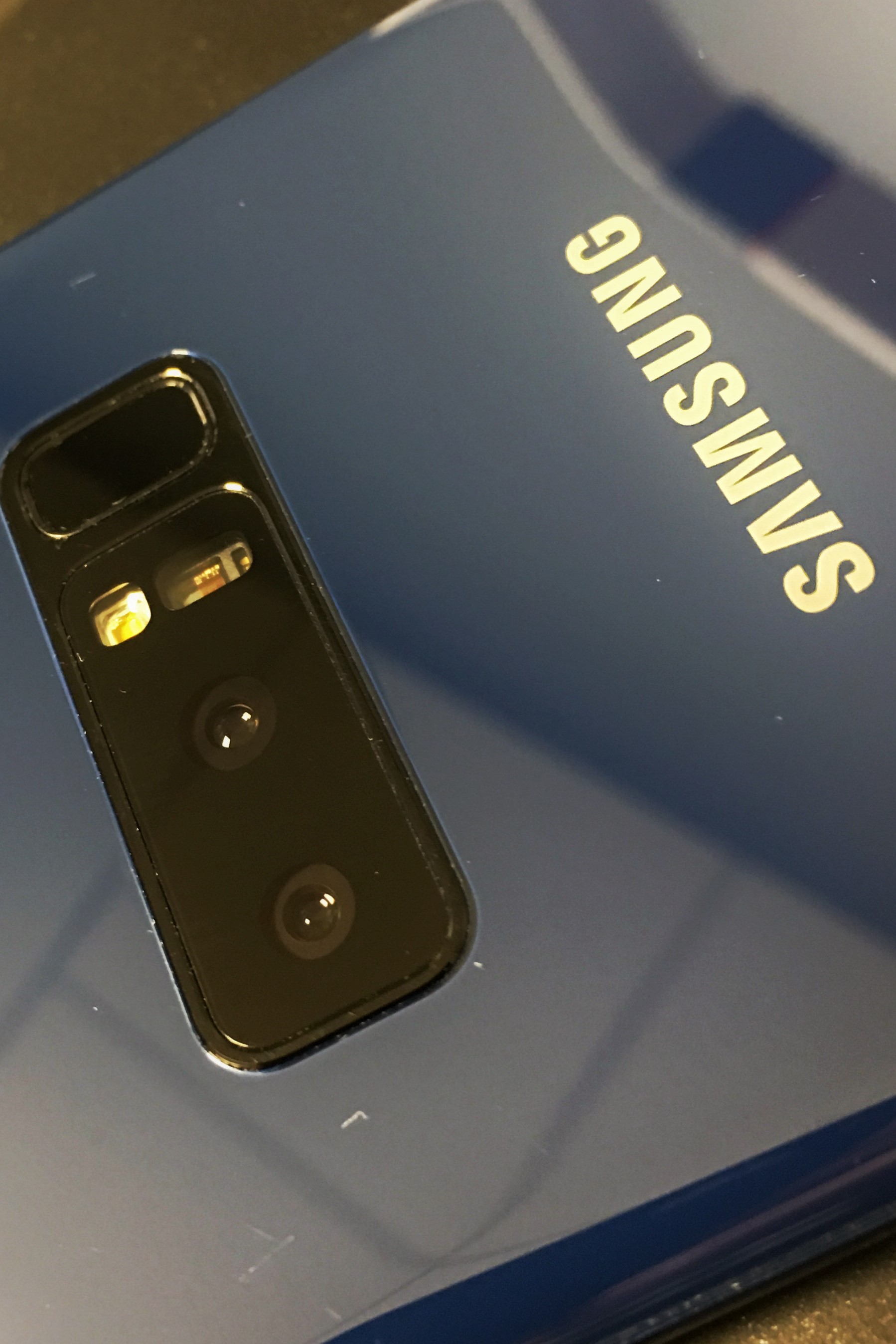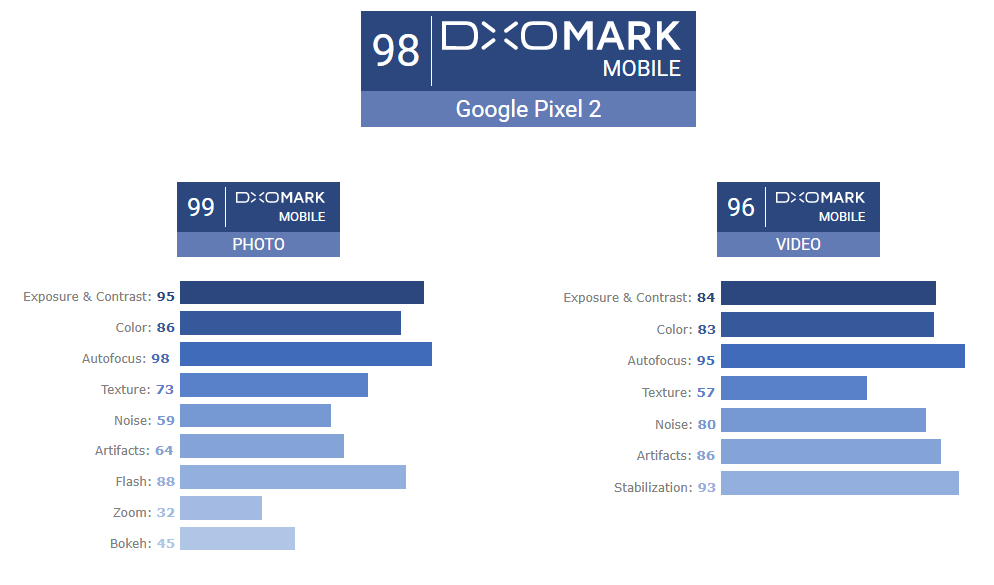You should take the time to read my article about why I am switching from an iPhone to an Android device. A summary of the situation is that I have had every iPhone since the very first one ten years ago and the spark isn't there anymore. I have been dual carrying Android phones for the last 5 years but my main personal daily driver has been an iPhone.
Looking at messages from readers, many of you are in the same boat and I will be reviewing a handful of phones for switchers with the requirements of an iPhone users looking to geek out.
The first phone I am reviewing is the Samsung Note 8 64GB North American edition. I mention this because my readers are global and you can find other derivatives (128/256GB storage, dual SIM, etc).
Last year I thought the Note 7 was the best Android phone I had ever used until it wasn't, because of the exploding battery issue. Until the recall, the Note 7 was in a league all on its own, even compared to the Galaxy S7. This year, not so much. The Gap between the Note 8 and the Galaxy S8 Plus has srunk dramatically.
The Samsung Galaxy S8 Plus
The closest competitor to the Samsung Note 8 is the Samsung Galaxy S8 Plus. The younger sibling has almost all of the features of its big brother except :
- Note 8 dual cameras
- Note 8 Stylus - SPen
- Note 8 has a 0.1" larger screen
- Note 8 has 2 more GB of RAM
For all of these upgrades, you will have to fork over an extra $124 (USA retail based on the unlocked versions).
The Samsung Galaxy S8 and Note 8 are both rated IP67 which means they are water and dust resistant (compared to the iPhone and Pixel 2 XL's IP 67).
SPen
Ask any note fan and the first thing they will show you is the Note 8's ability to take notes using the SPen even when the screen is asleep. Then they will open a drawing app and show you how you can use the SPen to draw with pressure sensitive brushes.
Most iPhone users look at this and call this cute and they dismiss the pen as nothing more than a parlour trick.
The truth is that writing on a device this size with a small pen just isn't comfortable to do for long periods of time. This isn't something you will likely do daily and this won't replace your notebook but... the SPen is useful for specific in-field tasks.
For my day job, I sign letters (PDF) once in a while and being able to do this without having to print and scan is incredibly valuable. The SPen is also a much more precise mechanism to highlight text (compared to my chunky man-fingers).
SPen works perfectly with Google Keep
I found myself using the SPen to click on tiny touch-targets on web pages, to annotate screenshots or crop with more accuracy and to resize app windows when using 2 apps simultaneously.
Regardless of all the negative comments made by SPen haters, the SPen is truly an indispensable feature of the Note 8. It is the defining feature of the Note 8. It is what makes the Note a Note and I now understand why.
Samsung Note 8 cameras
The Samsung Note 8 (like the iPhone 8 or the iPhone X) has a "standard" camera and a 2x telephoto lens (both 12 MP). The usefulness of the telephoto will depend on what type of pictures you take but most buyers should find this useful.
Yes, the telephoto camera is optically stabilized and the stabilization works well. In my testing, it worked as well as its main competitors. The only phone with better stabilization is the Pixel 2 with its Optical Image Stabilization (OIS) and Electronic Image Stabilization (EIS).
What about portrait mode you ask? It can create a fake depth of field effect that is adjustable post snap (aka you can change how much the background is blurred after the fact). Like the iPhoneX, this feature is driven by software and the performance is hit or miss. To be honest, this works as well as on an iPhone X but not as well as on a Pixel 2. The success of this feature will depend on appropriate lighting, the background and foreground, etc.
Samsung calls it primary camera a wide angle but it only has a 77-degree field of view which wouldn't really make it a wide angle. For comparison, the LG V30's primary camera has a 71-degree field of view, while it's wide angle has a 120-degree field of view.
How does the Samsung Note 8 camera compare to the iPhoneX?
Most iPhone users expect a point and shoot camera that gives "good enough" pictures most of the time in automatic mode. The Samsung Note 8 will meet and exceed your expectations. The Note 8 camera will allow you to take pictures from sunrise to sunset, whether it is sunny or raining (since it is water resistant).
“The Samsung Note 8 camera won’t let you down. It is a beautiful combination of speed, reliability and performance. ”
The camera is good but not as good as the Pixel 2.
The battery?
Die-hard Note fans love the line-up because the Note always pushed the technology boundaries. It meant Note users always had the best, biggest and flashiest toys to play with. This has always included the battery.
We all remember the issues with the Note 7 battery and looks like Samsung has taken the safe route by using a 3300 mAh battery in the Samsung Note 8.
I have spoken to a dozen Note fan readers and every single one of them complained that the Note 8 felt like Samsung was "playing it safe" and this isn't why they became Note fans. Remember that the cheaper Samsung Galaxy 8 comes with a 3500mAh battery.
Samsung's official position is that the smaller battery was required because of a lack of space (due to the dual camera system and the SPen slot).
To help alleviate the pain of a smaller battery, Samsung has efficient hardware and purpose-built software to help conserve power (where possible). In my 2 weeks of testing, the phone got through average days just fine but died when I was travelling (spotty reception and more media consumption). Either the battery should have been slightly bigger or their battery conservation model should have been more aggressive.
If you need to juice up, you can use the built-in QuickCharge 2 or wireless charging now found in most coffee shops. Again I felt like the fast charging was good but not great. The Huawei Mate 10 Pro, Pixel 2 XL and OnePlus 5 all out-charge the Note 8. Why didn't Samsung go with QuickCharge 3? On a positive note, if you own a USBC PD charger (like the one that comes with the Pixel 2 or the Pixelbook), you will be able to fast charge the Note 8. This was a wonderful surprise.
Samsung does offer fast wireless charging but it costs $125CAD which seems a bit too rich for me, considering you have to buy a couple to make it really work (bedroom, office, kitchen, etc).
What about the fingerprint scanner?
The fingerprint scanner is located in the back next to the camera. This is a horrible location because:
- it is not in a location where my finger naturally goes
- I keep smudging the camera lens when my finger misses the scanner
The alternative is to use the "as secure" Iris scanner. The Iris scanner is wonderful when it works, but frustrating when it doesn't (e.g. outdoors under bright sunlight).
Nothing more to say here.
The display
The display on the Note 8 is a thing of beauty and easily the best display on any smartphone (iPhoneX included). Its 6.3-inch display is bright, clean, clear and easy on the eyes. The Samsung Infinity Display stretches from one edge of the phone to the other.
With all the Pixel 2 XL screen issues, it is refreshing to see Samsung release AMOLED screens that are so beautiful. Videos look crisp. Pictures look amazing. Web pages are easy to read.
The screen is everything you expect from the leader in screen manufacturing. The screen is bright, punchy and the size means you are drawn to whatever content you are consuming.
Phone calls
My house is notoriously bad for cell phone reception and compared to other Android devices, the Note performed extremely well. checking cell phone signal strengh, the Note 8 consistently had a stronger signal and calls worked everytime.
Call sound quality was excellent. The little dinky speaker did the best it could do but I wouldn't use this for multi-person conference calls using it as speakerphone. The phone supports the latest bluetooth 5 wireless technology so you can always pickup a fancy pair of wireless headphones or use wired headphones with its built in 3.5mm headphone jack. But bluetooth 5 isn't turned on yet. We expect this switch to happen with Android 8 (Oreo).
Bixby
I hate Bixby.I hate Bixby. I hate Bixby. I hate Bixby with a passion. I never wanted to use it but did press on the dedicated Bixby button a couple of times by mistake. With the latest updates Samsung will allow you to turn off the button but I would like to remap it for Google Assistant and I can't.
Conclusion
I went into this review not knowing what to expect. Would this be a suitable replacement for a user switching from an iPhone to Android? Is this device worth the $1,000 price?
The Note 8 doesn't feel like a device built for geeks pushing the technology envelope. It just doesn't. The rowdy teenager has now grown up into a mature adult and more people want to be it's friend now. By becoming more mainstream, the target audience for the Note has grown significantly. In the last 2 weeks, I met grandmothers and other "normal" people that love their Note devices. Normies now love the Note because it is less jarring.
If you don't need the extra 2GB of RAM, the telephoto camera and the pen, the S8 Plus is a fantastic buy. But don't be too quick to dismiss the Note 8. Yes it isn't as special as it once was but it is a wonderful device.
My one major issue is the software. Android 8 (Oreo) has been out for 6+ months now, other smaller Android makers have already released their phone updates to it, but Samsung hasn't given us a release date yet. How can their 2017 flagship phone still not have Oreo? Additionally their custom launcher has dramatically improved but I still want the option to have a "stock" Pixel like launcher (similar to what Motorola does). These two issues may be what makes me switch back to a Google device next time.












